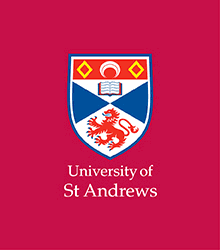Each year on June 21st, the Jesuit church of St Ignatius in Rome opens up to the public the rooms where St Aloysius Gonzaga lived and studied while he was at the Roman College. (These rooms can be visited throughout the year, and priests can say Mass in them, but an appointment must be made first.) The church of St Ignatius was the first to be named for the Jesuit founder, and begun shortly after his canonization in 1622; the project was financed by Cardinal Ludovico Ludovisi, nephew to one of the College’s more prominent alumni, Pope Gregory XV. Although he reigned for only two years and five months, Pope Gregory had the honor of canonizing, at a single ceremony, Ss Ignatius, Francis Xavier, Theresa of Avila, Philip Neri, and Isidore of Madrid, generally known as Isidore the Farmer; the Romans joked at the time that the Pope had canonized four Spaniards and a Saint. The church was not intended to receive the relics of its titular Saint, which still repose in the Order’s mother church, the Gesù, but rather to serve as the chapel for the 2,000 students enrolled in the Roman College by the beginning of the 17th century. Of the sixteen Popes who reigned from the accession of Gregory XV in 1622 to the suppression of the Society in 1773, half were alumni of the College.
St Aloysius died on June 21, 1591 at the age of 23, after receiving the Last Rites from his spiritual director, St Robert Bellarmine. He had come to the Roman College to begin his studies for the priesthood after completing the novitiate at the church of St Andrew on the Quirinal Hill. With the permission of his superiors, he was allowed to attend to those who had already recovered from the plague in one of the Roman hospitals, but wound up contracting it himself, and although he did not die immediately, was fatally weakened. Among the still-extant rooms of the Roman College which he knew were a common room with a chapel next to it, the very chapel in which he made his first vows in the Order after the novitiate, on November 25, 1587. Over time the rooms have been decorated, and two more chapels built; collectively, the three are known as the “Cappellette (Little Chapels) di San Luigi.” His relics were formerly kept in one of them, but now repose in the magnificent Lancellotti chapel in the south transept of St Ignatius. Another of the cappellette formerly housed the relics of another youthful Jesuit saint, John Berchmans, but he has also been moved into the main church, opposite St Aloysius in the north transept.
 |
| The altar of the Lancellotti Chapel, containing the relics of St Aloysius. |
 |
| In the reredos, St Aloysius in Glory, by Pierre Le Gros |
 |
| The courtyard of the Roman College, seen from the roof of the church of St Ignatius. The rooms of St Aloysius and the cappellette are within the lighter-colored part of the building in the upper right of this photograph. With the fall of the Papal State in 1870, the Roman College was seized from the Jesuits by the Italian government and transformed into a public high school. |
 |
| The bell-tower of the Roman College and the observatory. The Jesuit Fr Angelo Secchi, one of the greatest scientists of the 19th century, and the discoverer of astronomic spectroscopy, worked in and ran this observatory during his long and illustrious career; craters on both the Moon and Mars are named after him. |
 |
| During the Roman Republic of 1849, when the Papal government was temporarily overthrown, the Jesuits were forced to leave the city; the Roman College was occupied, and the capellette were badly damaged, as the inscription above notes, “by the fraud and crime of enemies”. Much of the painting in the rooms today dates from a restoration of 1860, such as this image of St Aloysius making a vow of virginity when he was only 9 years old. |
 |
| The entrance to the Saint’s room, now transformed into a chapel. |
 |
| The relics of St Aloysius were formerly kept within this altar in the chapel. |
 |
| A second small chapel in the room behind that of St Aloysius; this altar formerly contained the relics of St John Berchmans, who, like Aloysius, was seen by his superiors as one of the most promising seminarians in the order, but died at a young age before he could be ordained. |
 |
| The third little chapel, dedicated to the Virgin Mary. |
 |
| One of two massive reliquaries on the wall to either side of the altar, filled with relics from the Roman catacombs inter alia. |
 |
| A painting of St Aloysius receiving his first Holy Communion from St Charles Borromeo. |
 |
| Part of the Roman skyline from the rooms of St Aloysius; very little of what is seen here today existed in his time. The large palace dominating most of the lower part of this photograph is the Palazzo Doria Pamphili, the family home of another alumnus of the Roman College, Pope Innocent X (1644-55). |
 |
| The dome of the Jesuit Order’s mother church, formally known as the Church of the Holy Name of Jesus, but generally referred to as “il Gesù” in Italian and “the Gesù” in English. The name was later carried down to the Jesuit church of Naples, “il Gesù Nuovo.” |

































